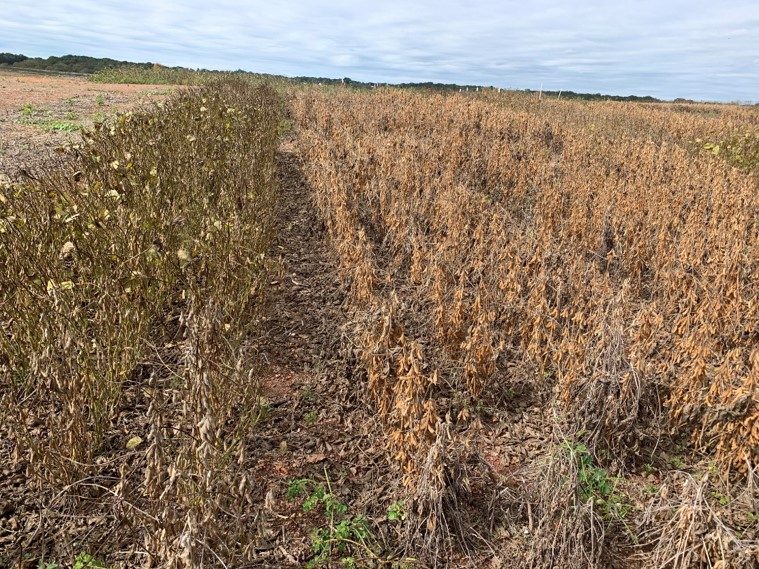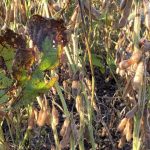
You’ve been hearing us talk about some of the challenges that farmers are facing this harvest season. But there’s now another issue impacting soybean producers.
“We’re catching a lot of Green Stem soybeans this year,” says Purdue Extension Soybean Specialist Shaun Casteel.
It can prevent the stems from drying down properly and cause the stems to remain green after seeds are mature. Occasionally, green leaves are also present. The green stems are tough, hard to cut, and more likely to plug the combine.
On the latest episode of the Purdue Crop Chat podcast, Casteel talks about Green Stem Syndrome and the problems it’s causing during harvest.
“Since we’ve had good growing conditions and then turned off dry, what ends up happening is we have this ‘reservoir’—if you think about a water tower and all the water up there, it’s going to get distributed throughout. We have the same thing with the soybean plants. They’ve created all this leaf biomass harvesting sunlight, and then the reservoir is a photosynthate, and it doesn’t have anywhere to go because the pods are aborting. So, we have the nasty combination around 9-to-10 percent moisture in beans with green stems and have to slow down the harvest.”

Casteel says that soybeans producers with fields showing green stem syndrome have two options.
You can harvest the beans at optimal grain moisture to capture water weight.
“If they’re just dry, and you have a dry field with 80° to 90° weather, you will probably be okay and the beans still be 8 to 9 percent moisture.”
But doing so could slow down harvest and increase your fuel costs with extra wear on your combine.
Another option is to wait and harvest the beans when the stems turn brown. But, you could end up seeing quite a bit of yield loss in the process.
“I’ve seen this week where we had some early beans where the pods are opening up and the seeds just shattered,” he says. “It’s just a mechanism of survival because it’s trying to save itself. If your fields weren’t ready yet, that’s probably not going to be the case, but if we catch another cycle of rain, or we get into these two to three cycles of wet-dry, wet-dry, that pod really gets to the point of shattering in the field before the combine even gets there.”
Casteel stresses that soybean producers need to be aware that this phenomenon is occurring so they can make informed decisions about optimizing harvest and reducing losses in yield and profit.
CLICK BELOW to watch the latest episode of the Purdue Crop Chat Podcast:









